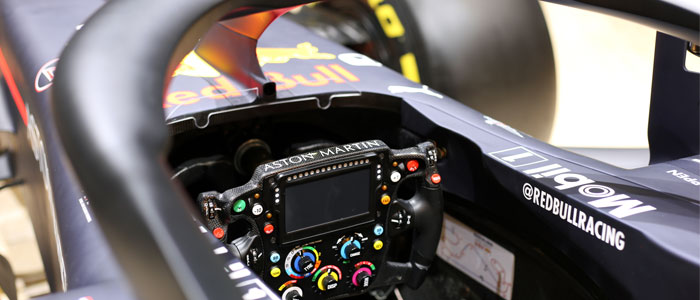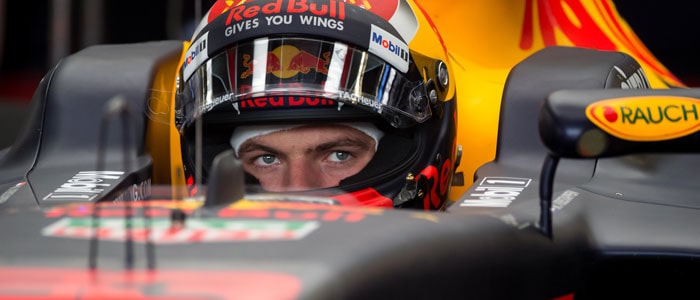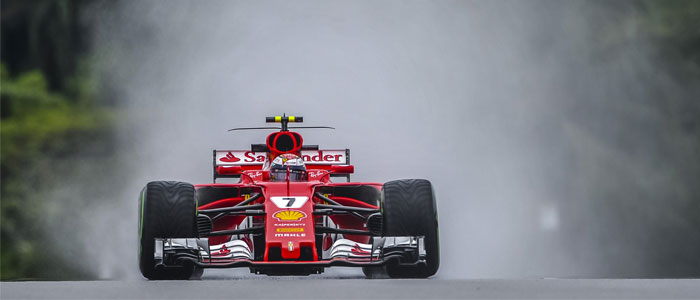F1 Driver’s Workout: How Fit Are Motorsport Racers?
18th Mar 22

An exciting new Formula 1 season is about to get underway, but did you know the drivers will have worked out for months in preparation for this weekend? Believe it or not, F1 drivers are some of the fittest sportspeople in the world. But they just drive a car, right? Whilst that is true, the speed of the cars, conditions within the car, and length of each race mean these drivers need to be in peak condition. As a result, an F1 driver’s workout is super intense and targeted to specific goals, so let’s explore how fit they really are.
Want to move fast? Jump to the right section below.
Conditions within the Car

Firstly, and probably the most important aspect of F1 driving, is the conditions within the car. Unlike many other sports, you are trapped inside a racing car for up to 90 minutes per race. This isn’t like sitting in your own car; F1 drivers have to be able to withstand a G-Force of more than 5x the force of gravity, all while they lose up to 5kgs of water from dealing with the heat from inside the car (around 50°C), apply around 80kgs of force to the pedals, maintain muscle strength, focus, communications with their team, and actually try and win a race. Now think about if they crash too; that’s a lot going on.
The conditions within the car and the race require drivers to be physically and mentally strong to complete the test drives and races. This means drivers have to reach a certain level of fitness and stay there throughout their whole racing career. Therefore, any change could have a massive impact on whether they can carry on racing.
Strong Cardiovascular System
An average person’s resting heart rate is around 60-100bpm. However, during an F1 race, drivers’ heart rates can increase to around 160-200bpm, meaning a driver must be able to handle this kind of strain on their cardiovascular system.
Cardio, as a result, is a massive part of an F1 driver’s workout, including interval training, to help strengthen their hearts and cardiovascular system enough to be able to make it through a race. As a result, F1 drivers are often so fit that their resting heart rates are around 40 bpm.
Muscle Strength

While cardio training is a vital part of an F1 driver’s workout, strength training is equally necessary. Drivers have to be able to hold their heads up, hold and turn the steering wheel, keep their bodies upright and operate the pedals, all without passing out from the G-Force. The strength of the shoulder, chest, and neck is the most important, as the G-Force on the head alone can weigh up to 25 kg. Add the helmet’s weight, and the fact that it can weigh up to 7kgs more means it can be massively difficult just to hold your head upright.
F1 drivers will focus their workouts on intensive strength training for those specific areas. This will help them withstand the force experienced during the races.
The rest of the body needs strong muscles to be able to stand the G-force, too, and also to protect the body from damage. Such high G-forces can easily break ribs and damage internal organs without a strong core and upper body muscles. A combination of cardio and strength workouts will help build up those vital muscles without becoming too bulky. This will keep them safe and focused enough to help them perform well and maybe even win!
Weight Management

Finally, weight management is imperative for F1 racing. Every car is built and designed accordingly, right down to minor details. Every car must be a specific height, weight, and width and must be designed to perfection to maximise airflow and aerodynamics to boost performance. The engine, brakes, suspension—everything has to be the best of the best. This is needed to gain any slight advantage against the other teams.
So if the cars have to be of such high standards, you better believe the drivers do, too. Every driver must maintain a specific body weight so that the car can be designed and built around them. This will help ensure the car is performing the best it can. If a driver gains even 1kg of weight, the car will be slightly slower because of it. Drivers, therefore, have to stick to a strict fitness/diet plan to maintain peak performance levels.
F1 driver workouts are designed intricately so that every driver can stay healthy and safe whilst performing to near perfection. Without this, F1 drivers won’t last long in their careers. With this, drivers can become the best of the best and can even be classed as some of the fittest sportspeople in the world.

Before beginning any exercise or nutrition program, consult your physician, doctor or other professional. This is especially important for individuals over the age of 35 or persons with pre-existing health problems. Exercise.co.uk assumes no responsibility for personal injury or property damage sustained using our advice.
If you experience dizziness, nausea, chest pain, or any other abnormal symptoms, stop the workout at once and consult a physician or doctor immediately.









